Kitchener Memorial Home for Boys, Hornsey, London
The Kitchener Memorial Home for Boys was opened by the Waifs and Strays Society in 1918 at 122 Hillfield Avenue, Hornsey. The home was named after Field Marshal Horatio Herbert Kitchener, Britain's Secretary of State for War during the First World War and the face on the famous 'Your Country Needs You' poster. He was killed in June 1916 when HMS Hampshire, taking him to negotiations in Russia, was sunk by a mine. The Kitchener Memorial Home for Boys was opened 'primarily for those lads whose fathers had in "the Great War" freely laid down their lives for king and country'. The formal opening of the home, on July 11th, 1918, was performed by the Duke of Connaught, with the Bishop of London performing a ceremony of dedication.
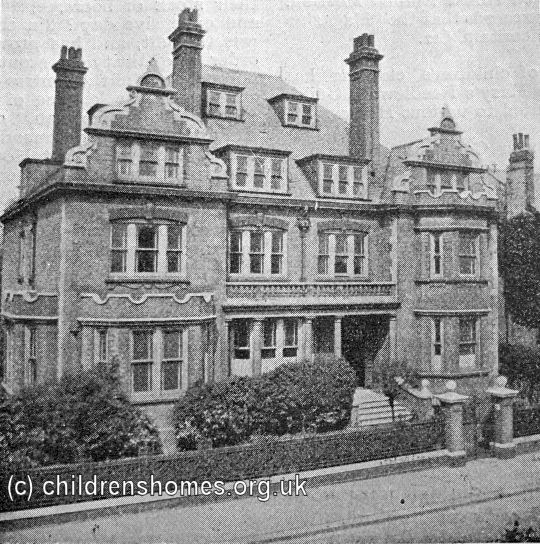
Kitchener Memorial Home for Boys, Hornsey, 1917. © Peter Higginbotham
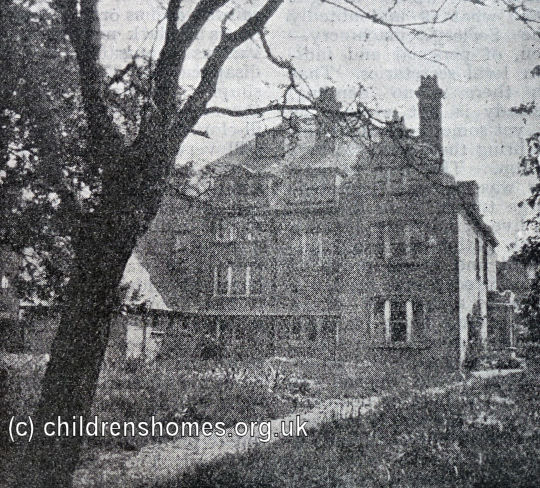
Kitchener Memorial Home for Boys, Hornsey, 1917. © Peter Higginbotham
The four-story building, previously known as Carleton House, stood in nearly an acre of grounds and could accommodate 48 boys aged from 8 to 14. After its conversion by the Society, the ground floor included a play room, reading room, Master's sitting room, dining room, kitchen, larder and pantry. The first floor contained two large dormitories, the Master's bedroom, an assistant's bedroom, and a chapel. The second floor held three further dormitories, another assistant's bedroom, a guest room, and a bathroom. The top floor included a sewing room but was mainly used as storage space. The basement of the building contained a workshop ad a room for coats and boots. The only completely new portion of building was the gymnasium. The walls of the house were decorated with pictures of battles and war heroes, while a Union flag was permanently flown outside the home. Fund-raising by the Society's Hereford branch raised the sum of £250 for an 'Old Boys' Bed' to provided in perpetuity at the home, with preference to be given to a Herefordshire boy.
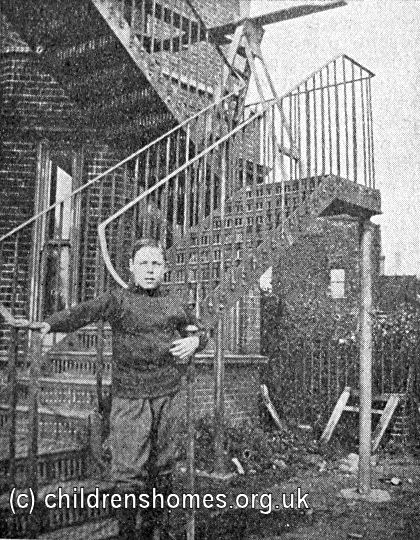
First inmate of Kitchener Memorial Home for Boys, Hornsey, 1917. © Peter Higginbotham
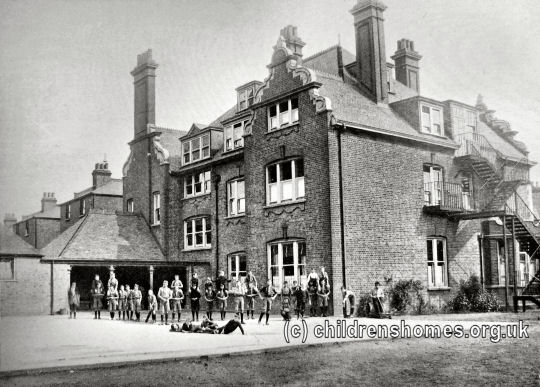
Kitchener Memorial Home for Boys, Hornsey, c.1918. © Peter Higginbotham
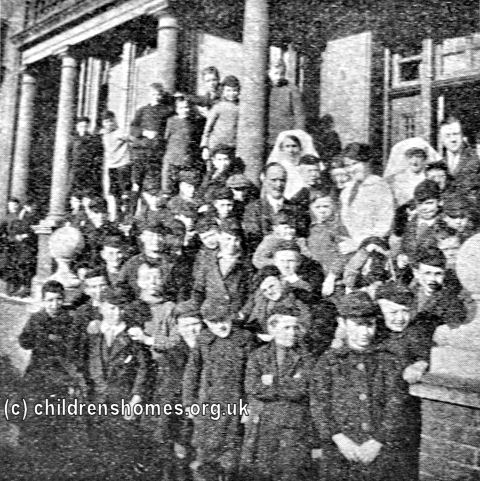
Kitchener Memorial Home for Boys, Hornsey, c.1920. © Peter Higginbotham
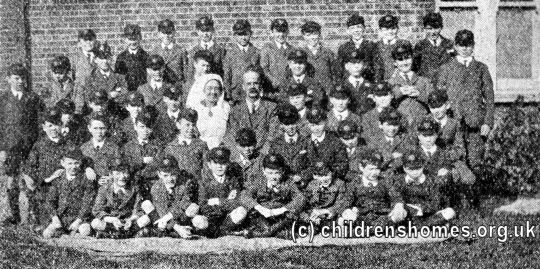
Kitchener Memorial Home for Boys, Hornsey, c.1925. © Peter Higginbotham
The home was closed at the outbreak of the Second World War in 1939 and the residents evacuated to Cowdray House at Midhurst in Sussex. The home was wound up in 1941.
The property later housed the Kitchener Memorial Training College. It has now been converted to flats.
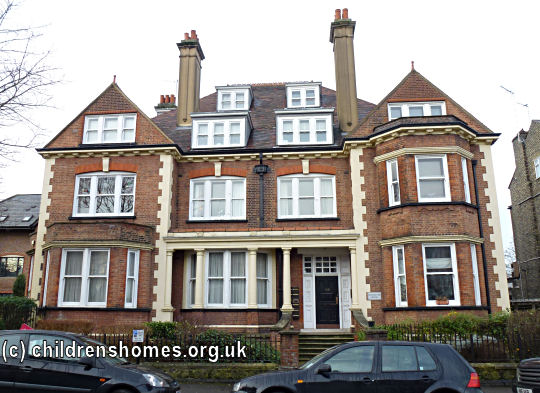
Kitchener Memorial Home for Boys, Hornsey, 2013. © Peter Higginbotham
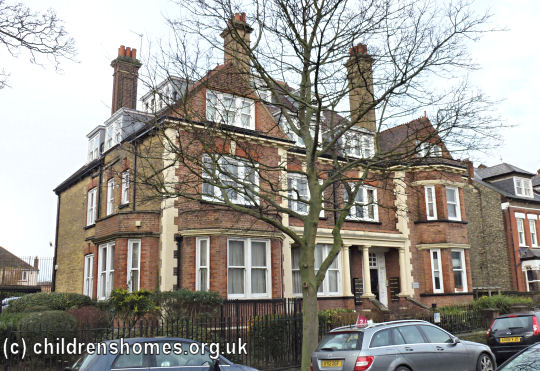
Kitchener Memorial Home for Boys, Hornsey, 2013. © Peter Higginbotham
Records
Note: many repositories impose a closure period of up to 100 years for records identifying individuals. Before travelling a long distance, always check that the records you want to consult will be available.
- Index of the Society's first 30,000 children's case files ordered by surname.
- Index of the Society's first 30,000 children's case files ordered by date of birth.
- The Children's Society Records and Archive Centre is at Unit 25, Springfield House, 5 Tyssen Street, London E8 2LZ (email: archives@childrenssociety.org.uk). Files for children admitted to its homes after September 1926 were microfilmed in the 1980s and the originals destroyed. Some post-1926 files had already been damaged or destroyed during a flood. The Society's Post-Adoption and Care Service provides access to records, information, advice, birth record counselling, tracing and intermediary service for people who were in care or adopted through the Society.
- The Society has produced detailed catalogues of its records relating to disabled children, and of records relating to the Children's Union (a fundraising body mostly supported from the contributions of children).
Bibliography
- Bowder, Bill Children First: a photo-history of England's children in need (1980, Mowbray)
- Church of England Waifs and Strays' Society [Rudolfe, Edward de Montjoie] The First Forty Years: a chronicle of the Church of England Waifs and Strays' Society 1881-1920 (1922, Church of England Waifs and Strays' Society / S.P.C.K.)
- Higginbotham, Peter Children's Homes: A History of Institutional Care for Britain's Young (2017, Pen & Sword)
- Morris, Lester The Violets Are Mine: Tales of an Unwanted Orphan (2011, Xlibris Corporation) — memoir of a boy growing up in several of the Society's homes (Princes Risborough, Ashdon, Hunstanton, Leicester) in the 1940s and 50s.
- Rudolf, Mildred de Montjoie Everybody's Children: the story of the Church of England Children's Society 1921-1948 (1950, OUP)
- Stroud, John Thirteen Penny Stamps: the story of the Church of England Children's Society (Waifs and Strays) from 1881 to the 1970s (1971, Hodder and Stoughton)
Links
- Hidden Lives Revealed — the story of the children who were in the care of The Children's Society in late Victorian and early 20th Century Britain.
- The Children's Society
Except where indicated, this page () © Peter Higginbotham. Contents may not be reproduced without permission.


